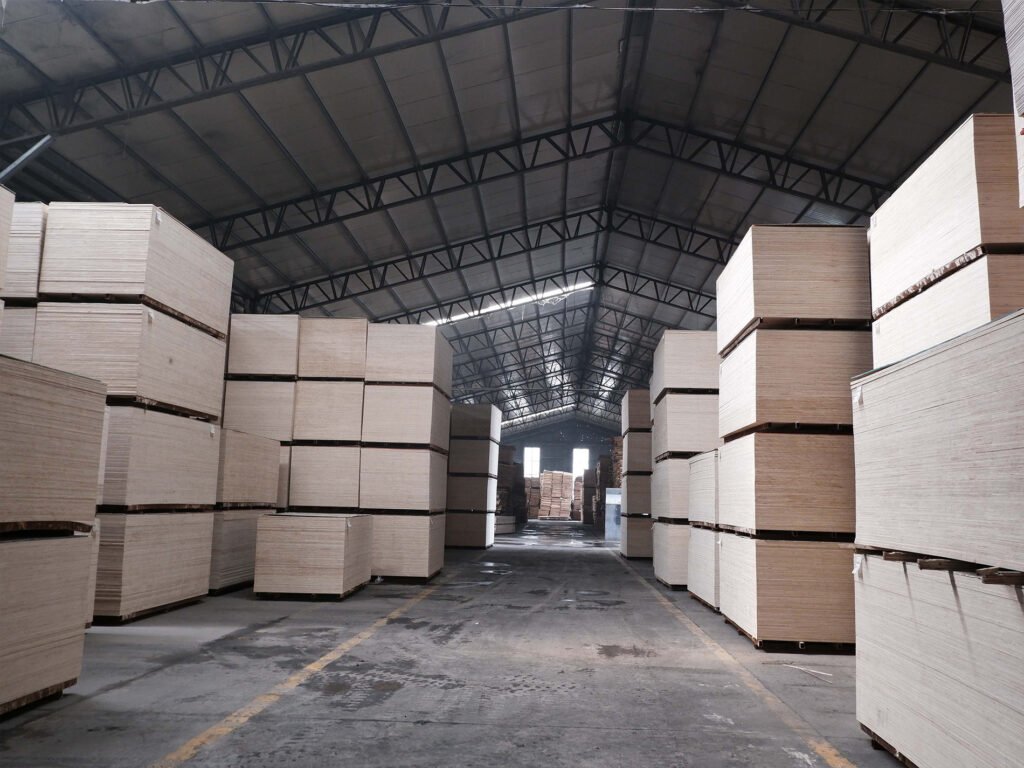How to distinguish the quality of plywood
Distinguishing the quality of plywood is essential to ensure that you choose the right material for your specific project. Plywood quality can vary significantly based on factors like construction, grade, and intended use.



Here are some key factors to consider when evaluating the quality of plywood:
- The Quality Of Plywood Grade:Plywood is graded based on the quality of its veneer faces. Common grading standards include A, B, C, and D, with A being the highest quality. There are also specialty grades like “sanded” or “exposure” grades. Understanding the grade helps determine the visual quality of the plywood.
- Number of Plies:The number of plies, or layers, in the plywood can impact its strength and stability. More plies generally result in a stronger and more stable panel. For example, 3-ply plywood is less stable than 5-ply or 7-ply plywood.
- Veneer Quality:Examine the veneer faces carefully for defects such as knots, voids, gaps, splits, or patches. Higher-quality plywood will have fewer defects on the veneer faces. Knots and defects in the veneer can affect the surface finish and stability of the quality of plywood.
- Core Material:The core material between the veneer faces can be made of various types of wood or engineered wood products like MDF or particleboard. The quality of the core can affect the overall strength and stability of the plywood. In some cases, the core may be specifically designed for moisture resistance or other properties.
- Thickness:Plywood comes in various thicknesses, and the appropriate thickness depends on your project’s requirements. Thicker plywood is generally stronger and more stable. Ensure that the thickness meets the structural needs of your project.
- Glue Type:The adhesive used to bond the veneers together is crucial. High-quality plywood typically uses moisture-resistant or waterproof glue, which enhances its resistance to moisture and prevents delamination. Check the label or product specifications for information on the adhesive used.
- Grain Direction:Plywood is made by cross-laminating veneer layers. The grain direction of adjacent layers should be perpendicular to each other for optimal strength and stability. Check the orientation of the grain pattern.
- Certifications:Look for industry certifications like FSC (Forest Stewardship Council) or CARB (California Air Resources Board) compliance. These certifications indicate that the plywood meets environmental and safety standards.
- Edges and Cuts:Check the edges and cuts of the plywood for smoothness and straightness. High-quality plywood should have clean, straight cuts without splintering or jagged edges.
- Weight:Heavier plywood often indicates denser and stronger construction. Compare the weight of different plywood sheets of the same size and thickness to assess relative density.
- Price and Brand:While price isn’t the sole indicator of quality, it can be a useful reference point. Recognized brands with a reputation for quality are often a reliable choice.
- Intended Use:Consider the intended use of the plywood. For structural applications, you’ll need a stronger, higher-grade plywood, whereas for decorative purposes, a lower-grade plywood with a visually appealing veneer may suffice.
In summary, evaluating the quality of plywood involves examining factors like grade, veneer quality, core material, thickness, adhesive, and certifications. Assessing these factors in conjunction with your project’s specific requirements will help you make an informed decision and choose the right plywood for your needs.




